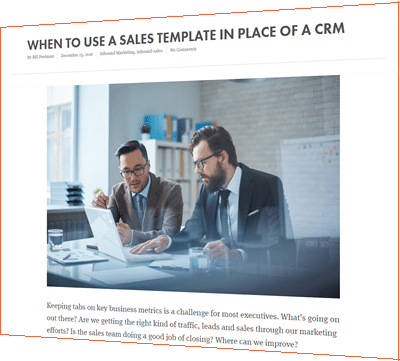 Like most small-to-medium businesses, senior living communities are finding themselves in a tight spot marketing-wise. The marketing efforts that used to bring new residents are less and less effective, and a plethora of “experts” are talking about new ways to market, social media, online tools, and a wide variety of other well-intended advice and ideas.
Like most small-to-medium businesses, senior living communities are finding themselves in a tight spot marketing-wise. The marketing efforts that used to bring new residents are less and less effective, and a plethora of “experts” are talking about new ways to market, social media, online tools, and a wide variety of other well-intended advice and ideas.
How can a senior living marketer sort out the noise?
All this noise is based around internet marketing, an area of increasing interest and confusion to senior living marketers. We understand that the internet is a new marketing medium that we (probably) should be utilizing, but where to begin? How to get started? What do I need to do to increase website traffic and leads from our website? Will this actually work for us? How does this internet marketing fit with our person-to-person marketing? Or does it?
These questions and more plague the senior living marketer. Let’s see what we can do to sort out some of these concerns and provide some direction based on what really works for senior living communities.
How to generate more leads from your website
Many senior living communities are becoming very good at generating a sufficient quantity of high quality leads from their website. They all start with a simple process of attracting people to their website.
- Generate more web pages (content) with focused keywords to raise your visibility in the search engines. This is most frequently done by blogging, as it’s the easiest way to add new content to a website.
- Have this content address the concerns, challenges, and goals of your target audience.
- On every page of your website, and at the bottom of each blog article, offer your audience something of value. It could be a checklist of questions to ask about moving your parents into senior living, or a story about one of your residents, or a “sneak peek” at what goes on in the kitchen of a senior living community, or an invitation to lunch at your community. Anything that your target audience would find useful, helpful, valuable.
In order to get this valuable offer, your web visitor has to fill out a short form with their name and email address — AHA! Now you have a prospect!
This may not yet be a “hot” prospect, but you’ve generated this new prospect right from your own website, and many more will come in the same way! Once started, this process of attracting people to your website and having them give you their email address keeps working for you 24-hours-a-day for this month, next month, next quarter, and years into the future. This is a solid foundation for effective lead generation right from your own website.
Tell people about your new articles
Now that you’re creating new blog articles with calls-to-action at the bottom of each, it’s time to tell people about it. Share your blog posts on Facebook and Twitter, and make sure your Executive Director shares it on LinkedIn. You can share your images from the blog posts on Pinterest, with a link directly to each article.
Keep your sales people up-to-date on your blog posts so that they can refer people to your website. Even better, subscribe your salespeople to your blog, so they get every post in an email.
Measure your results, adjust, and repeat
Be sure to measure your results. Some things you’ll want to track include:
- Number of posts published per month (we recommend at least 2 per week)
- Number of unique visitors to your website per month
- Number of website visitors from social media
- Number of new prospects per month
- Number of leads given to Sales each month
- Number of move-ins per month
- The visitor-to-prospect ratio
- The prospect-to-sale ratio
Look at these numbers carefully every quarter, and adjust your tactics based on the results you’re seeing.
Tie in your offline marketing to more easily track results
Any offline marketing you do can easily be measured and tracked if you include an online component.
- For example, if you’re advertising for a new staff member, put the application online and direct everyone there. Then look in your website stats (every website has them – ask your webmaster) to see where visitors to your employee application came from.
- You can do the same with any print marketing, or magazine articles written about your community. Be sure you have a link to your website from the Chamber of Commerce and any other organizations you belong to.
- Make your referral partners aware of the FAQ on your website. Track visits to this page, or better yet, have your FAQ be downloadable content so you can capture names and email addresses.
- Setup a form on your website where visitors (prospects) who come to your community for lunch or for a meeting, can “login”. Set a computer or laptop or tablet on the reception desk and show your receptionist how to have everyone login. (Don’t have residents’ friends and family login. . . you want to collect prospects or referral sources here.)
A special free offer for senior living communities
How can you create effective blog articles or other web content without knowing exactly who you’re writing for? And what their goals, challenges, and concerns are? You need to develop a few buyer personas to define this and make all your marketing efforts much more effective.





